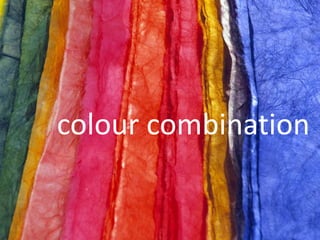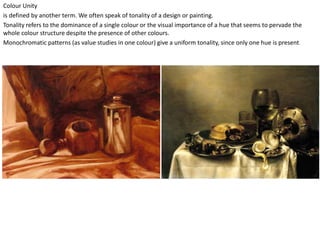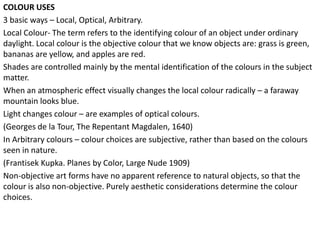Color is light of different wavelengths that is perceived by the human visual system. Objects appear colored because they selectively absorb and reflect wavelengths of light. A color can be described by its name, saturation (purity), and value (lightness). Chroma, saturation, intensity, and value are interrelated terms used to describe the qualities of a color. Color combinations can create visual harmony through relationships like complementary, analogous, split-complementary, and triadic. Color discord occurs when colors clash rather than relate harmoniously. Local color refers to the actual color of an object, while optical and arbitrary colors are used subjectively by artists. Color and value both play important roles in design, though some argue that value is more fundamental.



















